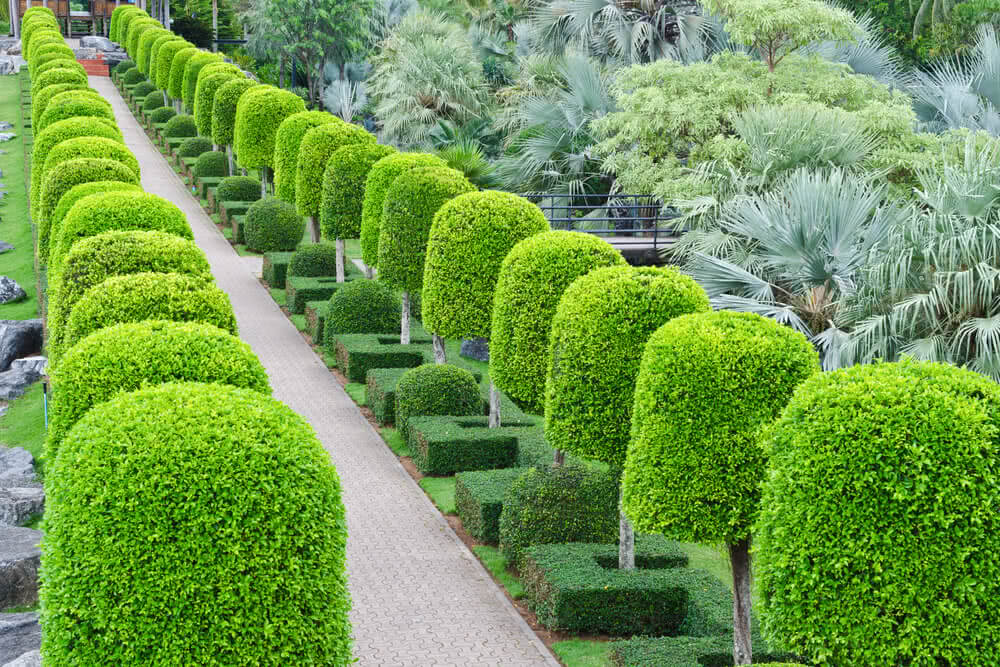In landscaping, lines exist in softscape (garden plants) as well as hardscape (manmade features). Read about 10 tips for landscape design.
The visitor's eye automatically follows the garden line whether it be the edge, the curve or the outline of landscape design.

Different types of lines in landscaping:
1. Straight lines:
Designing of landscape begins with straight lines. Straight lines are more common and are repeated in the formal gardens and symmetrical garden features. These are often found in formal hardscape edges and material.
Straight lines are the lines of function, stability, get from here to there – no surprises ahead. They are considered forceful.
Examples of straight lines in landscape: Central avenue or pathways, internal edges, outer hedges, striped lawns.
1.1 Axis line:
This is an imaginary straight line in any garden around which the garden is created striking a balance. Learn about how to maintain a lawn.

2. Curved lines:
Purposefully developing the garden features with curved lines is a common occurrence in landscaping. The curved lines create an informal, natural, relaxed character; these tend to be experienced as restful.
Curved lines are the line of beauty and are smooth, give the sense of progress, moving, and natural feeling.
Examples of curved lines in landscape: Internal pathways, or pathways inside big lawns, curved edges.

2.1 Meandering lines:
These are extended curved lines made in a garden to mimic a flow of a river or a stream. Small garden pathways are given naturalistic form by developing them with meandering lines.

3. Vertical lines:
These lines in landscape move the eye up. Vertical lines are purposely used to make a large space feel compact. These create more excitement in a garden.
Hardscapes that create vertical lines: Poles, pillars, statues, other tall ornamental structures.
Softscapes that create vertical lines: Narrow tall trees like Polyalthia, Bottle palm, coconut palm.

4. Horizontal lines:
These move the eye along the ground plane. Horizontal lines are purposely used to make a compact space feel larger.
Examples of horizontal lines: Plantations of dwarf borders in horizontal alignments.
4.1 Horizontal Bed-lines:
Horizontal Bed-lines are created where the edge of the plant bed meets another surface material, such as turf, groundcover, gravel, or patio pavers.

Lines create geometric forms:
It is by using lines; various forms can be developed in landscaping. Geometric forms like circles are common in plants; whereas square, rectangular or polygonal forms are common in hardscaping material.
Line, form, color, and texture are four major elements of landscape designing.

You may want to read more about developing color schemes in flowerbeds. Also read about what's the texture of your garden plants?
Happy gardening!










